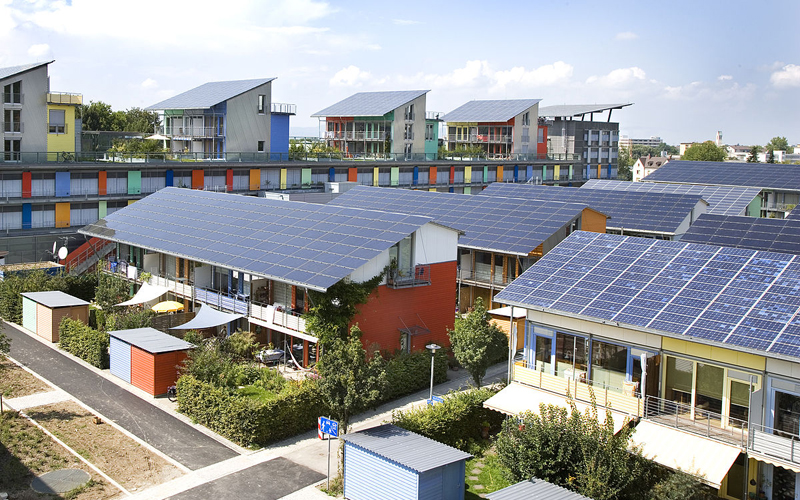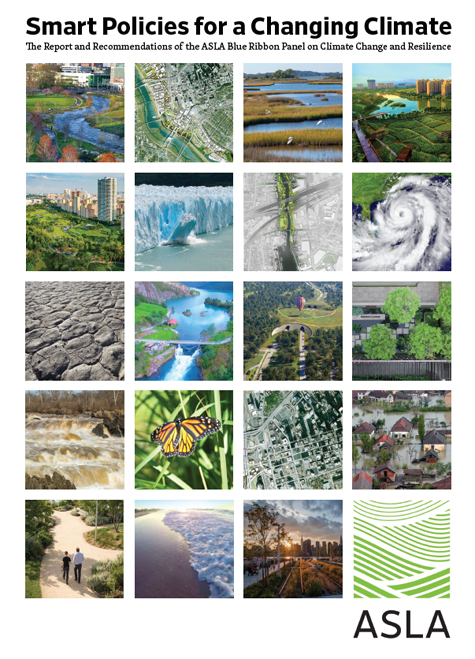Professional Practice
Sustainable Residential Design: Increasing Energy Efficiency
 By using passive solar heating and an extended roof of photovoltaic panels, these houses produce more energy than they consume. The Solar Settlement in Schlierberg, Freiburg, Germany / Wikipedia, Andrew Glasser, CC-BY-3.0
By using passive solar heating and an extended roof of photovoltaic panels, these houses produce more energy than they consume. The Solar Settlement in Schlierberg, Freiburg, Germany / Wikipedia, Andrew Glasser, CC-BY-3.0
Inefficient home energy use is not only costly, but also contributes to the growth of greenhouse gas (GHG) emissions, the primary cause of climate change. According to the U.S. Energy Information Administration, the residential sector accounted for 21 percent of total primary energy consumption and about 20 percent of carbon emissions in the U.S. in 2012. And according to Architecture 2030, building construction and operations-related energy use accounts for almost 50 percent of total GHG emissions.
Through , a comprehensive approach to sustainable building and site design, sustainable residential landscape architecture practices can not only improve the environment, but also result in net-zero or even climate positive homes. If part of a broader integrated site design, sustainable residential landscape architecture can help eliminate the need for fossil fuel-based energy, while creating a healthy residential environment.
Homeowners can go net-zero or climate positive by tapping the potential of landscapes. As an example, residential green roof and wall systems, which are often key features of integrated site design projects, can reduce energy use and home heating and cooling costs.
According to , homeowners can use trees and dense shrubs to shade their home and any external HVAC systems or block wind and thereby further reduce energy use.
Homeowners can further leverage clean energy technologies, like solar-powered LED outdoor lighting.
The environmental and economic benefits of energy efficient technologies increase as homes are tied together into multi-family housing complexes with shared infrastructure. Research shows dense development , conserves natural habitats, and reduces by encouraging walking, cycling, and taking public transportation. Communities like and are examples of residential communities that have taken innovative approaches to design and planning by implementing sustainable energy, water, and waste management systems.
Landscape architects can help homeowners by undertaking a comprehensive
energy audit and then identify landscape-based solutions for generating
renewable power or reducing energy waste.
State and local governments also work with design professionals to incorporate sustainable residential landscape architecture codes throughout urban, suburban, and rural areas. For example, that new buildings, and some renovations, must include solar panels.
Source: , U.S. Energy Information Administration
Green Roofs
Green Walls
Tree Placement for Energy Efficiency
Solar
This guide was written by Dana Davidsen and Jared Green.
Climate Change Resources:
Download Report:
Sustainable Planning and Design Guides:
Sustainable Residential Design Resource Guides:
Health and Well-Being:
Organizations
, U.S. Green Building Council
Resources
Energy Efficient Home Landscapes, American Society of Landscape Architecture
, Washington, American Planning Association
, The Dirt, American Society of Landscape Architects (Ë¿¹ÏÊÓƵ)
, Southeast Michigan Council of Governments
, Puget Sound Action Team and Washington State University
, The Dirt, American Society of Landscape Architects (Ë¿¹ÏÊÓƵ)
, The Dirt, American Society of Landscape Architects (Ë¿¹ÏÊÓƵ)
, City of Seattle
Research
¡°,¡± Sue Reed, New Society Publishers, 2010
"," Liat Margolis & Alexander Robinson, Birkhauser Basel, 2007
"," J. William Thompson & Kim Sorvig, Island Press, 2007
Projects
, Freiburg, Germany
Rolf Disch
High Point, Seattle, Washington
Mithun
One Drop at a Time ¨C New Resourceful Paradigms at 168 Elm Ave, Elmhurst, IL
de la fleur LLC
, Hackbridge, Sutton, United Kingdom
, London, United Kingdom
, S?nderborg, Denmark
, Oberlin, Ohio
If you know of useful resources we've missed, please send your recommendations to: info@asla.org